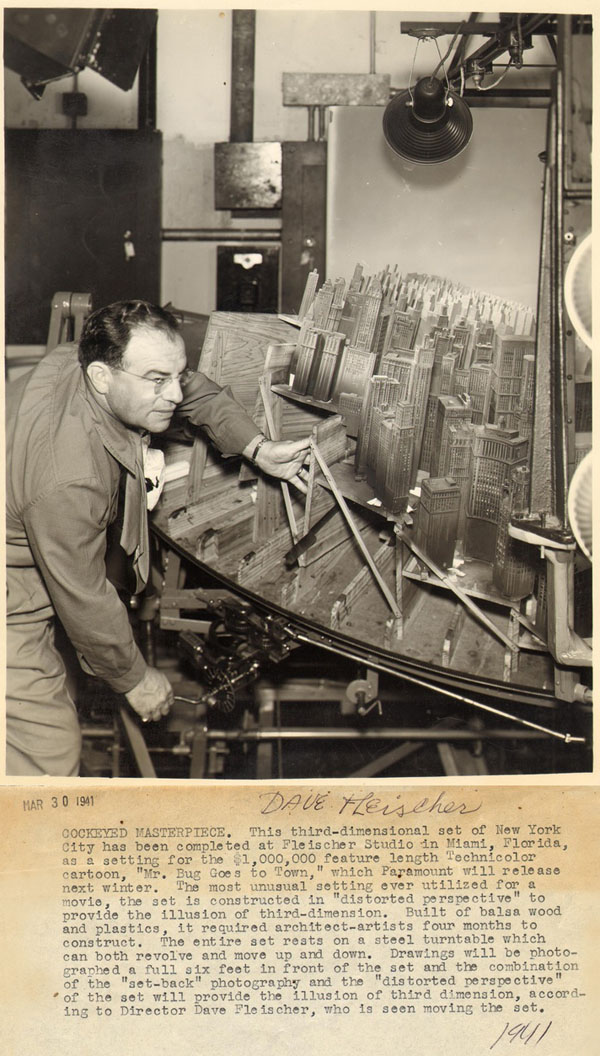
Penny Cartoons. On Pee-Wee’s Playhouse (1986) was a segment featuring clay animation of a little blonde girl named Penny who had pennies for her eyes. Real little girls were interviewed with general questions like “What’s the worst thing that ever happened to you?” or “What would you do if you could do anything you wanted?” For the first season, there was a list of 50 questions.
The recorded dialog is cut up and then animation is done to match the words. The first season the work was done by Peter Lord and David Sproxton of Aardman Animations who had done a similar style for the short Creature Comforts and later a series of U.K. commercials for Heat Electric.
The second season was from Tom Gasek and Craig Bartlett assisted by sculptors Elizabeth Butler and Suzanne Smith and was animated at the Hollywood Tokyo Film Consortium. Gasek and Bartlett used “replacement heads” for the character expressions.
It was actor Paul Reubens himself who played Pee-Wee who came up with the initial idea as he explained to Steve Segal: “The Penny cartoons are done in a very unique way. I was looking for something in the first season when we were conceiving the format of the show. We were going to do a clay animation featurette on the show so I thought it would be nice to have a little girl instead of a little boy. I’m kind of like a little boy on the show so I thought it’d be nice to have a little girl that girls could identify with. Kind of like a little feminist piece if you will.
“Penny is full of non-sequiturs and usually doesn’t have an ending. I like that it is really a kids’ portion of the show. It is something that came off the top of a kid’s head and went right into being storyboarded and clay animated. Even if it doesn’t make sense — not that the rest of the show makes total sense either – it just seems like a pure kind of section.”
Miniature New York. For the opening shot of the feature film Mr. Bug Goes to Town (1941) at the Miami Studio for the Fleischer production, a three-dimensional miniature of the city of New York was built under the supervision of architect-artist Bob Little. It required four months to build out of balsa wood and plastics.
The entire set rested on a steel turntable which could both revolve and move up and down. The miniature city was constructed at varying levels, scientifically planned to provide perspective. Each building was hand-painted, wired for electricity and over 16,000 tiny panes of glass were used for windows. Overhead lights heightened the feeling of depth by providing shadows on the buildings just like the sun would do normally.

Award Winning. Cartoon All Stars To The Rescue was seen by a worldwide audience of thirty-three million people when it was released in April 1990 and was lauded for its contribution to the battle against substance abuse. Among those many honors included the 1990 Media Award from the San Fernando Valley, California chapter of the National Council on Alcoholism and Drug Dependence; the George Washington Honor Medal from the Freedoms Foundation at Valley Forge, Pennsylvania and the Scott Newman Foundation and the Los Angeles chapter of the Public Relations Society of America.
 Andreas Deja on Gaston. In Comic Buyer’s Guide May 17th, 1991, animator Andreas Deja said, “Taking on the animation of Gaston (in Beauty and the Beast) was really a challenging assignment. I looked back on some of the Disney classic features and never thought they had some princes that were really done well. You take a look at the princes in Cinderella and Sleeping Beauty and they come across as one-dimensional. They don’t do very much. They aren’t really exciting or entertaining.
Andreas Deja on Gaston. In Comic Buyer’s Guide May 17th, 1991, animator Andreas Deja said, “Taking on the animation of Gaston (in Beauty and the Beast) was really a challenging assignment. I looked back on some of the Disney classic features and never thought they had some princes that were really done well. You take a look at the princes in Cinderella and Sleeping Beauty and they come across as one-dimensional. They don’t do very much. They aren’t really exciting or entertaining.
“So I thought with Gaston, this is going to be different. He’s a handsome guy with an attitude problem. That’s basically how he is. So in terms of story points you have a lot of juicy material rather than just a lame prince.
“I’ve been asked before, ‘how do I go about doing research for a character like this?’ and I say, ‘I live in a town that’s full of these guys’. You go down to the beach and they’re flexing their muscles and they’re in love with themselves.
Hanna’s Proposal. At a March 27th, 1990 conference in Prague held under the auspices of UNICEF, producer Bill Hanna called on animators around the world to establish an international organization to promote positive social changes on a world-wide basis. He wanted the cartoon industry to determine the ways animation could help kids around the world adapt to the monumental social and political changes taking place now and in the future.
 He felt the animation organizations currently in existence were more award and performance oriented. He pointed to contributions of John and Faith Hubley and John Canemaker as examples of how the animation community could address topics such as world hunger, human rights and the nuclear threat.
He felt the animation organizations currently in existence were more award and performance oriented. He pointed to contributions of John and Faith Hubley and John Canemaker as examples of how the animation community could address topics such as world hunger, human rights and the nuclear threat.
Hanna envisioned a process where one country could provide the storyboard and another country the animation and a third might do the inking and painting and camera work. He felt that animation was an international language, understood by children around the world.
“I think all of us in the cartoon industry recognize that there is a continuing need to address the role of animation in promoting social causes all over the world,” said Hanna.
The Early Simpsons. In the Daily News for March 19th,1990, Sam Simon, executive producer for The Simpsons was as surprised as anyone about the success of the then-new animated series. “I thought we had a chance to fall on our faces by breaking the major rules of TV. I don’t think anybody knew it would be this big right off the bat. I knew going in there was a small, demented segment of the population that would love the show no matter what.
“Part of the charm of Matt Groening’s vision is that he’s able to take a kid’s point of view and point out how adults screw up in raising kids. And he’s able to show how kids see the truth.”
The show debuted on January 14th, 1990 and consistently finished among the top 20 or 30 show each week even though Fox only reached 86% of all TV households.


 Jim Korkis is an internationally respected animation historian who in recent years has devoted his attention to the many worlds of Disney. He was a columnist for a variety of animation magazines. With his former writing partner, John Cawley, he authored several animation related books including The Encyclopedia of Cartoon Superstars, How to Create Animation, Cartoon Confidential and Get Animated’s Animation Art Buyer’s Guide. He taught animation classes at the Disney Institute in Florida as well as instructing classes on acting and animation history for Disney Feature Animation: Florida.
Jim Korkis is an internationally respected animation historian who in recent years has devoted his attention to the many worlds of Disney. He was a columnist for a variety of animation magazines. With his former writing partner, John Cawley, he authored several animation related books including The Encyclopedia of Cartoon Superstars, How to Create Animation, Cartoon Confidential and Get Animated’s Animation Art Buyer’s Guide. He taught animation classes at the Disney Institute in Florida as well as instructing classes on acting and animation history for Disney Feature Animation: Florida.




















































Bob Little was there at Fleischer’s and at Famous Studios for a long time. It sure would be nice to read more about him.
There’s just something about the Tracy Ullman Simpsons shorts that always have me coming back. Sure, Matt Groening may be embarrassed by them, but he needs to come to grips with the fact that if it wasn’t for those shorts, he’d never be as iconic as he is today.
Actually, Groening (or perhaps Sam Simon or Al Jean) must have been peering back at one particular feature from those early days. A sort of updated version of the “World War III” feature segments (as seen in the embedded video) was produced for The Simpsons. In it, Homer builds a bomb shelter under the yard, and upon completing it, urges the family into a drill. Homer advertently closes the shelter door, forgetting that it has a timed lock, leaving everyone cooped up inside for an indeterminate amount of time. Eventually, after only several hours, the door unlocks. Once they step outside, they discover the whole of Springfield in a shambles. They believe it was a nuclear holocaust as a result of a meltdown at the power plant, when in actuality it was the aftermath left by a slew of tornados.
I always liked those “PENNY” cartoons. It’s almost a shame that something larger wasn’t conceived from those ideas…and, sometimes, it is fun to enjoy a cartoon that doesn’t make any sense in the real world. That is what good animation really is, another world entirely that couldn’t possibly exist in “real” time.
I love the intro to “Mr. Bug,” as the camera zooms from outer space to the city and finally to the enclave where the bugs live. Four months to make a model for a couple of minutes of animation! Nice story, Jim, and nice photo of Dave Fleischer with the model.
That sure doesn’t sound like the Bill Hanna I knew. I’m not being sarcastic when I write that he may have supported this concept so it would put him in contact new overseas studios to send work to.
As for CARTOON ALL-STARS TO THE RESCUE, it was a disaster. Ugly, preachy and made drugs seem fascinating. A spectacular example of middle-aged hacks trying to be hip and sensitive in forcing a lamely-constructed message on children.
Looking back at that Reagan/Bush era of anti-drug propaganda makes me cringe and laugh because of how ignorant it all was. This was all for our own good of course. They wanted children to live long enough to join the military and die in a war at 17 for the sake of perserving Corporate America. Oh wait, I meant freedom and democracy.
At least the Gummi Bears didn’t get dragged into this anti-scientific mess. That would have raised serious questions about the molecular make-up of gummi berries.
Thanks for the credit, Jim. That quote could have come from my working on the show (although I didn’t work on the Penny Cartoons) or an article I wrote for animation Magazine. i suspect the latter.
Of course, Bartlett’ s involvement with the Penny cartoons gave him a platform for an original creation of his own, namely his Arnold character, featured in a series of shorts that used the same technique as the Penny segments, produced initially for installments of Seame Street, that would later become the basis for the Nicktoon “Hey, Arnold!”.